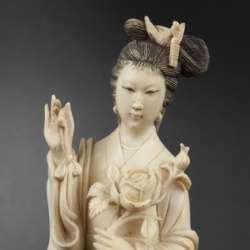Dharma seal
Dharma seal
[法印] ( Jpn hoin )
(1) (Skt dharma-uddana ) Also, seal of the Law. A standard for judging whether a certain doctrine is Buddhist; also, basic principles applied to this standard. In this context, "seal" indicates a doctrine's reliability, authenticity, and universality. Three Dharma seals are generally known. The first is that all things are impermanent. The second is that nothing has an independent existence of its own. The third is that nirvana, or enlightenment, is tranquil and quiet. According to another tradition, the doctrine that all existence is suffering replaces the third or is added to the above three. With the addition of this doctrine, the three Dharma seals become the four Dharma seals. Later on, Mahayana Buddhists in China regarded the three Dharma seals as the Dharma seals of Hinayana, asserting that there is only one Dharma seal in Mahayana, the Dharma seal of the ultimate reality, of the true aspect of all phenomena.
(2) In Japan, an official rank among priests. The ranks of the Dharma seal, Dharma eye, and Dharma bridge were established in 864 in Japan. These positions were given to the three classes of priests supervising all other priests and nuns. The three classes were, in descending order of rank: administrator of priests ( Jpn sojo ), which corresponded to the rank of Dharma seal; supervisor of priests (sozu ), to the rank of Dharma eye; and discipline master (risshi), to the rank of Dharma bridge. Later, however, these titles became formalities and lost their original significance. Eventually Dharma seal became simply a title of honor. Later the title was also given to Confucianists, sculptors of Buddhist statues, physicians, and artists.
